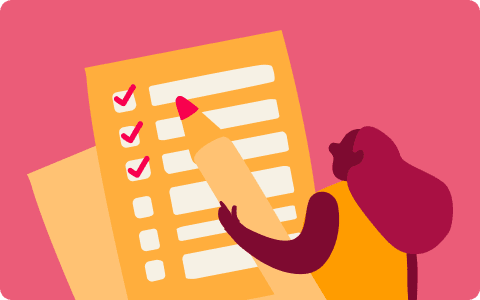Burnout is the emotional and or physical exhaustion employees experience due to long term, incessant, work-induced stress.
Common causes of burnout include:
- Relentless workloads
- Neglectful managers
- Unclear expectations
- Unjust treatment
- Lack of recovery time
Employees working under energy-consuming circumstances for a prolonged period without breaks or vacation to recharge can run out of motivational fuel and experience work-related burnout.
Why should HR leaders care about employee burnout?
Burnout is common among full-time workers, and it can significantly interfere with an employee’s:
- Well-being
- Productivity
- Engagement
- Retention
- Attendance
Burned-out employees can lose their sense of self, letting work override self-care. In addition to harming work-performance, employee burnout also burdens company and governmental budgets, costing the U.S. healthcare system, for example, up to $190 billion.
While day-to-day stress is inevitable, burnout is preventable.
Key insights
- Employee burnout is a state of emotional and physical exhaustion caused by prolonged work-related stress, leading to decreased motivation and performance
- Burnout impacts team members’ well-being, productivity, engagement, retention, and attendance, making it a significant concern for HR leaders
- To combat burnout, HR professionals can implement practices such as effective communication training, setting clear expectations, promoting well-being, recognizing achievements, and offering competitive compensation packages
- Preventing burnout fosters a positive company culture and supports a healthy work-life balance, ultimately enhancing overall organizational success
What can HR leaders do to avoid employee burnout?
HR leaders can take preventative measures against burnout by implementing these practices:
- Provide communication training for managers and employees. Practical communication skills enable managers and employees to express their needs and goals while actively listening to each other. This, in turn, helps managers gauge each employee’s strengths, weaknesses, and capabilities, and ultimately, avoid employee burnout.
- Set clear expectations. Uncertainty breeds stress and confusion. Employees may feel as if they are treading water, struggling to stay afloat amidst a sea of unclear expectations. HR leaders and managers can provide clear expectations regarding deadlines, goals, and important meetings, to support employee time-management and success.
- Include employee well-being as part of the routine. HR leaders can weave breaks into the daily work schedule to create a healthy work culture. Stretching and meditation in a yoga space, or jam-sessions in a music-room encourage employees to destress through calming self-care practices. HR leaders can also integrate 20-minute walking breaks, or even walking meetings, for a change of style and scenery. Integrating wellness into the workday can help employees recharge and avoid drowning in stress.
- Recognize employee achievements. Companies can show they value their employees by celebrating employee achievements. This ensures that employees take a break from work to express gratitude for individual accomplishments and pride for team wins.
- Offer attractive compensation packages. Working hard without receiving financial stability in return is exhausting and demoralizing. It’s essential to provide employees with fair and competitive compensation to maintain a high level of employee retention, engagement, and motivation.
Recommended For Further Reading
How can preventing employee burnout improve company culture?
Healthy and happy employees are the building blocks of robust company cultures. Because burnout interferes with employee well-being, employees must maintain a work-life balance, which enables them to contribute a positive attitude to the company culture.
